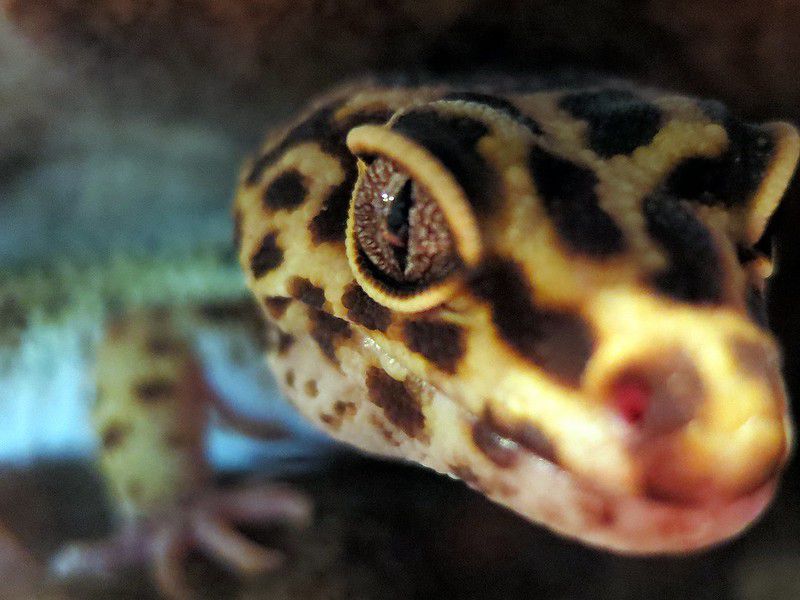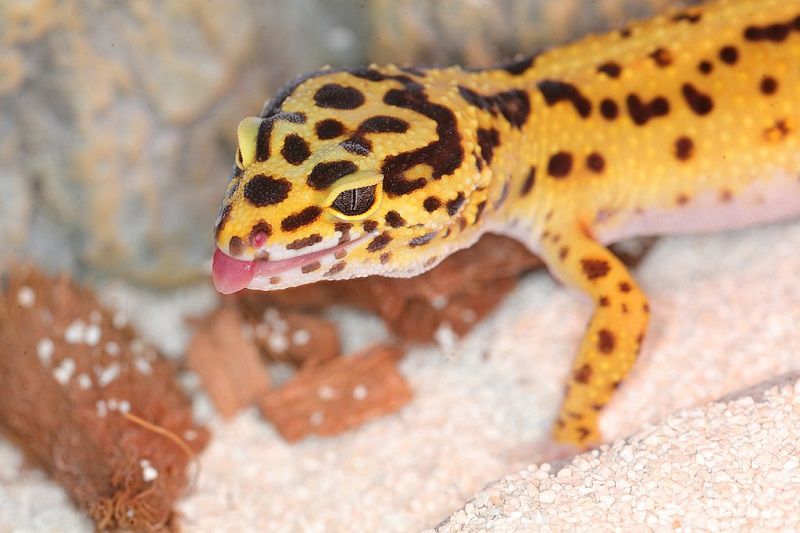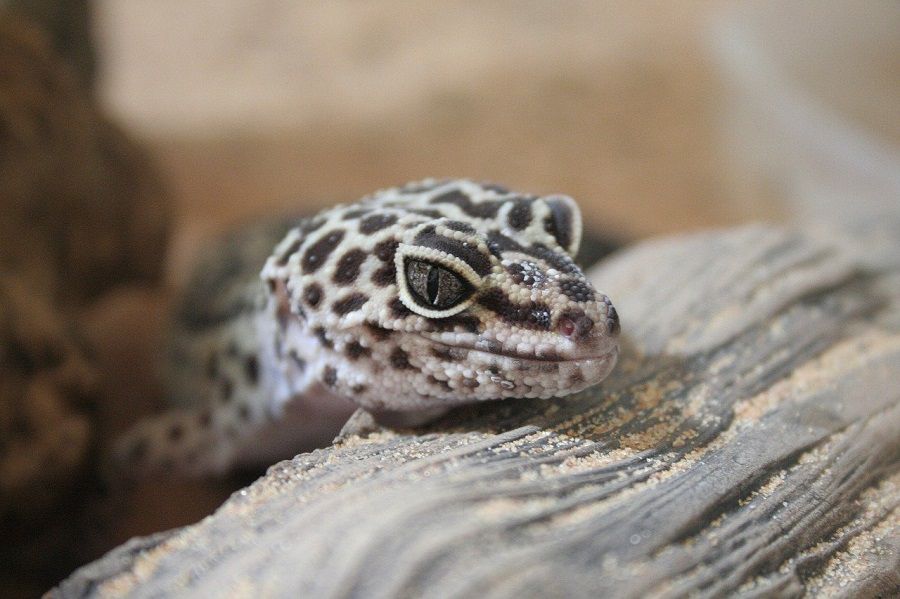Table of Contents
One of the most attractive features of a pet leopard gecko is its eyes. They are large and round and make leopard geckos incredibly attractive to look at. Unlike a lot of reptiles, these particular geckos have eyelids that move. As a result, they can blink and close their eyes when they sleep. This is rare even among geckos. So rare, in fact, that the first part of their scientific name and classification, Eublepharis macularius, translates to “good eyelids.” Nevertheless, with eyes of the size and type that leopard geckos have come an unfortunate number of issues. They are susceptible to eye infections, and there are several signs to look out for and steps to take when it comes to the eye health of these creatures.
Leopard Gecko Eye Infection
There are a number of different problems that can develop in the eyes of a leopard gecko. The main infections tend to be either viral, bacterial, or fungal related. The most common of all eye infections in a leopard gecko is bacterial in nature and is also fairly common in humans – conjunctivitis. You will easily notice if your leopard gecko has conjunctivitis as their eye will close. As well as this, the eyelid will bulge due to a build up of discharge.
Important: The conjunctiva is particularly prone to infection in leopard geckos, and the causes can vary.
Often it is environmental, and conjunctivitis is sometimes described as a disease that is easier prevented before it affects your gecko than cured after the fact. If their terrarium is not cleaned regularly or thoroughly, for example, bacteria can build up, especially in dirty water. If you suspect your leopard gecko has conjunctivitis, then it is crucial to take it to a vet as it will need antibiotic eye drops.
Something that is often mistaken for conjunctivitis is a parasitic worm, which can bury itself in the conjunctiva and present the same symptoms as a bacterial infection. If there are any signs of worms in the eye of your leopard gecko then a vet must be consulted as the problem could lead to permanent eve damage if left untreated.

Leopard Gecko Close-Up 
Leopard Gecko
Leopard Gecko Eye Problems
Your leopard gecko may have other problems that are either not an infection or maybe a precursor to an infection:
- Due to their environment and the nature of their movement, leopard geckos are prone to getting debris in their eyes. Sand, dust, or part of the substrate can get into their large eyes and either get stuck (causing bulging in the eyelid) or cause a scratch.
- During the shedding process, the dead skin around the eyes can sometimes become lodged and cause irritation. Owing to the nature of their eyelids, the dead skin is sometimes difficult to shed naturally. Should it get stuck around the eye, it can prevent a leopard gecko from opening its eye.
- As is always the case with reptiles, they are very sensitive to all elements of their environment, including light. If there is too much light in and around your leopard gecko’s terrarium, or not enough areas of shade, it can irritate their eyes and cause them to close.
- A lack of vitamin A, also known as hypovitaminosis A
 , can cause or exacerbate eye problems. It often presents the same symptoms as conjunctivitis and both issues can be treated simultaneously.
, can cause or exacerbate eye problems. It often presents the same symptoms as conjunctivitis and both issues can be treated simultaneously.
Preventing Eye Infections
There are ways that you can help prevent eye infections in your leopard gecko:
- Maintain a clean environment, with regularly changed water and substrate
- Monitor temperature, humidity, and light levels at all times
- Ensure only smooth items are present in your leopard gecko’s terrarium to avoid irritating the eyes
- Feed your leopard gecko the right balance of vitamins and minerals in order to prevent a wide range of issues, including eye problems caused by a lack of vitamin A.
Photo Credits:
- Featured Image (Leopard Gecko Resting Head): Image by Daniel Mačura from Pixabay
- Leopard Gecko Close-Up: Ruth Hartnup
 – CC BY 2.0
– CC BY 2.0 - Leopard Gecko: Christian von Faber-Castell
 – CC BY 4.0
– CC BY 4.0

